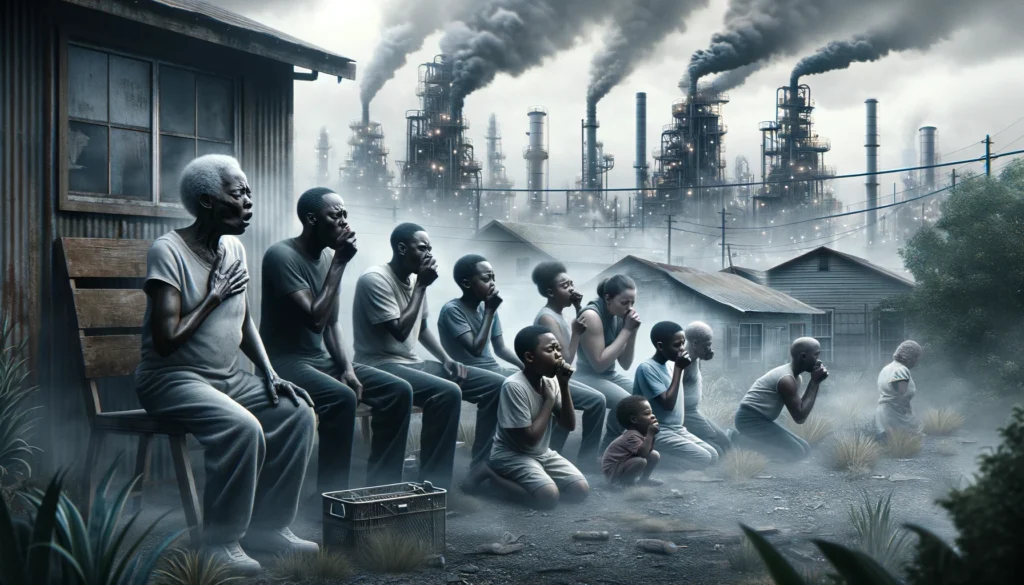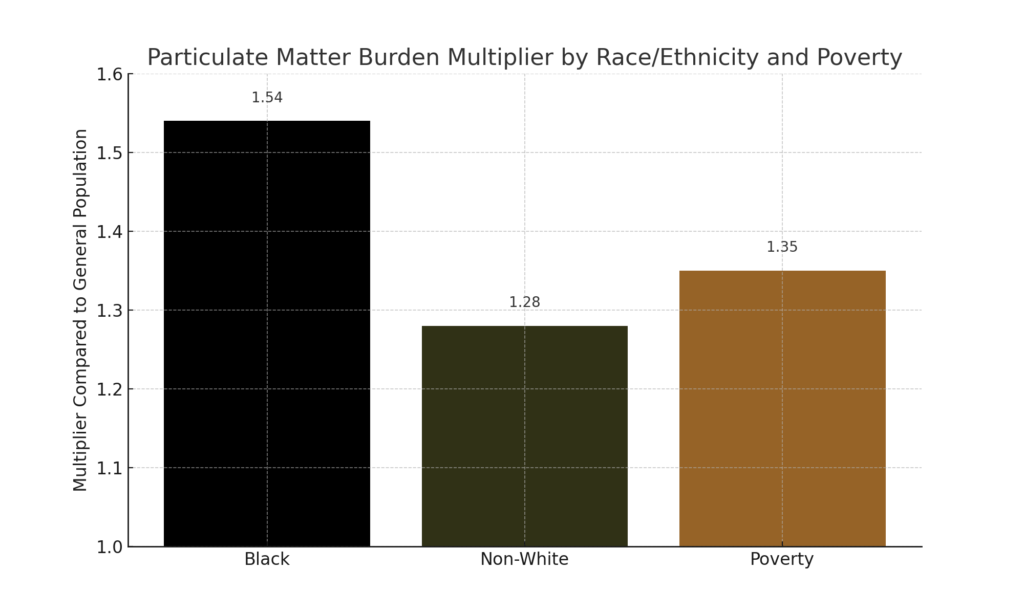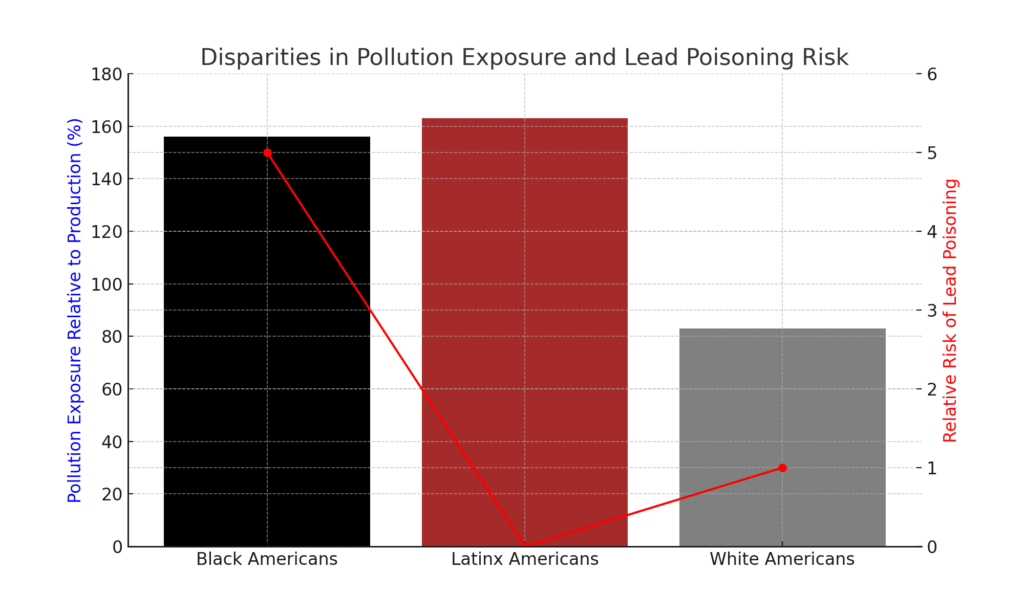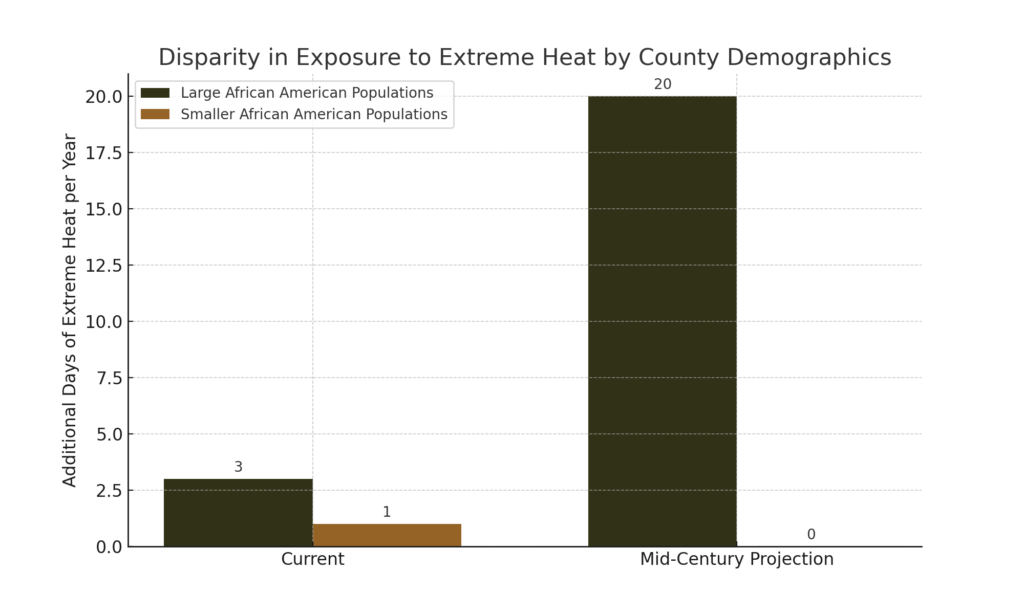
By Darius Spearman (africanelements)
Support African Elements at patreon.com/africanelements and hear recent news in a single playlist. Additionally, you can gain early access to ad-free video content.
The Geography of Pollution: How Black Communities Are Positioned for Peril
Disproportionate Exposure to Pollutants
Black and minority communities disproportionately face higher exposure to industrial pollution. Factories, power plants, landfills, and toxic waste sites are commonly placed near these neighborhoods. Consequently, residents suffer from increased air pollution and contaminated water, which are serious health risks. This positioning is largely due to residential segregation and historic discriminatory practices like redlining. Redlining is a practice in which financial services such as mortgages, loans, and insurance are systematically denied to residents of certain areas based on their race or ethnicity. This systemic racism leaves Black communities with higher poverty and lower property values. As a result, they become targets for such industrial siting (Medical News Today, The Century Foundation).

Historical Context of Segregation and Environmental Justice
Furthermore, residential segregation exacerbates environmental risks for these communities. Hence, the geography of pollution mirrors a history of racial discrimination. As evidence, “Historic racist practices like redlining and discriminatory zoning pushed Black families into less desirable areas near environmental hazards” (The Century Foundation).
“Jackson has struggled with safe water access since the 1940s… Many residents and politicians say that racism is the reason for Jackson’s water woes.”
(NewsOne)
The Health Cost: Dire Consequences for Black Communities
Rising Health Disparities Linked to Environmental Factors
The health consequences of environmental racism are severe. Black communities experiencing constant exposure to toxins report higher incidences of asthma, cancer, reproductive issues, and developmental disorders in children. Existing racial inequalities in healthcare access and economic instability compound these health disparities. Such disparities paint a grim picture of the cumulative impact of environmental racism (Environmental Health Journal).

Efforts to Address the Disparities
However, there are rays of hope as legislative changes and community advocacy begin to effect positive change. These efforts are reshaping policies and improving environmental conditions in Black neighborhoods. These initiatives are vital. They focus on providing medical and infrastructural support to these heavily impacted areas. Additionally, they strive to educate residents about the dangers of their environments.
Government Initiatives
The U.S. Environmental Protection Agency (EPA) recently elevated its commitment to environmental justice. Establishing a new national office focused on environmental justice and civil rights aims to bring these crucial issues to the forefront. Furthermore, the EPA has launched a $2 billion Community Change Grants program designed specifically to support projects in underserved communities suffering from environmental harm. Additionally, the EPA has initiated 16 Environmental Justice Thriving Communities Technical Assistance Centers. These centers provide crucial support to communities burdened by pollution, assisting them in navigating the complexities of environmental protection (EPA).
Legal Advocacy
Moreover, organizations like Earthjustice, Environmental Law Alliance Worldwide (ELAW), and the Environmental Law & Policy Center are making significant strides. For instance, they are pursuing legal actions and policy advocacy to shield communities from environmental injustices. Similarly, the Southern Environmental Law Center focuses on litigation and policy reforms. These efforts are geared towards addressing racial and income inequalities that intersect with environmental issues across the Southeast (Earthshare).
Community Empowerment and Grassroots Efforts
Nonprofits such as WE ACT for Environmental Justice, Communities for a Better Environment, and the Indigenous Environmental Network are also pivotal. They empower marginalized communities and amplify their voices on environmental issues that directly affect them. These organizations provide resources, training, and technical assistance, helping communities to advocate against polluting facilities, participate in decision-making processes, and assert their rights effectively (Earthshare).
Research and Education
On the educational front, think tanks like the Environmental Law Institute are conducting research on innovative practices to ensure the meaningful inclusion of vulnerable populations in environmental policies. They, along with other groups, offer educational programs and resources aimed at raising awareness about environmental justice issues among policymakers, legal professionals, and the general public (Environmental Law Institute).
Political Power and Policy: The Fight for Environmental Justice
Challenges in Advocacy and Representation
Often, Black communities do not possess the political clout or economic means to fight effectively against environmental injustice. This lack of power stifles their voice in discussions about industrial siting and environmental policies. Additionally, “Black communities often lack the political power and economic resources to prevent the siting of polluting facilities” (The Century Foundation).
Moreover, this lack of political power underscores a broader issue: policies and regulations meant to protect from environmental harm do not adequately prioritize Black and minority neighborhoods. As a result, these communities are frequently left with few defenses against the encroachment of environmental hazards (The Century Foundation).
Future Prospects and Global Movements
Broadening the Scope: Climate Change and Global Implications
Finally, climate change aggravates the challenges faced by Black communities worldwide. This global crisis calls for an international response to ensure environmental justice. Additionally, movements around the world are now addressing these issues, showing a promising trend towards global solidarity.

Black communities are particularly vulnerable to the impacts of climate change, such as extreme heat, flooding, and worsening air pollution. Urban heat island effects, aging infrastructure, and proximity to coasts or flood-prone areas exacerbate these risks. These vulnerabilities are intensified by the ongoing systemic racism and resource scarcity that underpin environmental racism (Medical News Today, The Century Foundation).
Towards a Just Environmental Future
In summary, the intersection of segregation, discriminatory policies, and inadequate political power results in Black communities bearing an undue burden of environmental hazards. Addressing these deep-rooted issues is essential for achieving true environmental justice and health equity.
The fight against environmental racism is pivotal for securing a sustainable and equitable future for Black communities. Thus, continued advocacy and effective policy are essential. We must support environmental justice initiatives to safeguard our planet and our people.
About the author
Darius Spearman is a professor of Black Studies at San Diego City College, where he has been pursuing his love of teaching since 2007. He is the author of several books, including Between The Color Lines: A History of African Americans on the California Frontier Through 1890. You can visit Darius online at africanelements.org.
